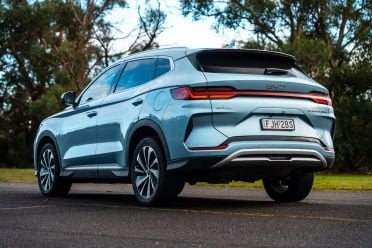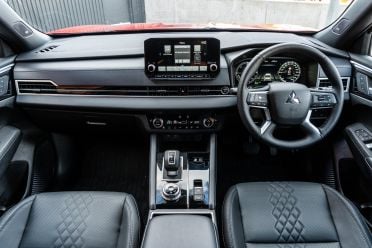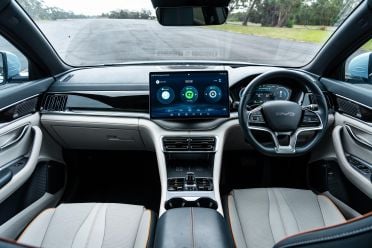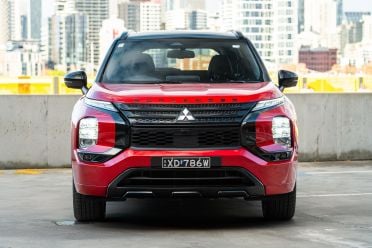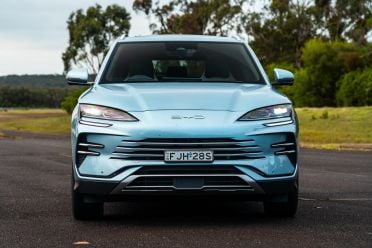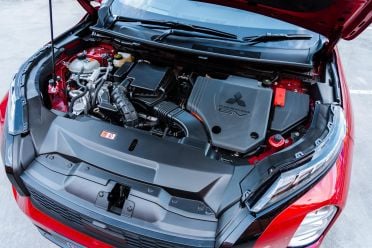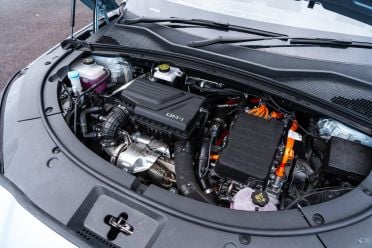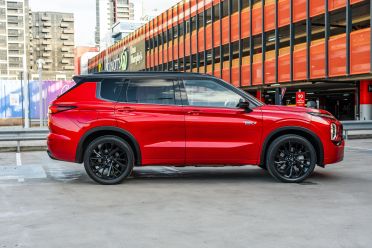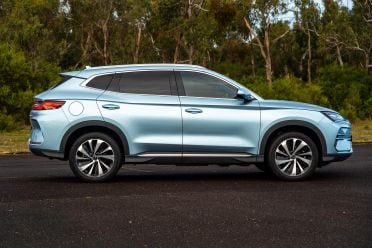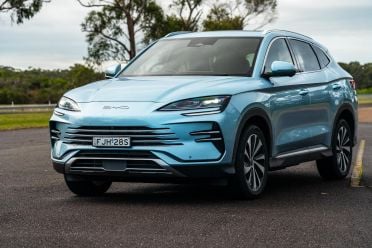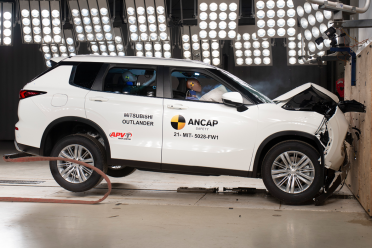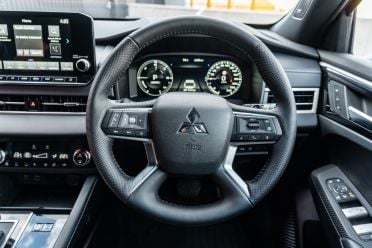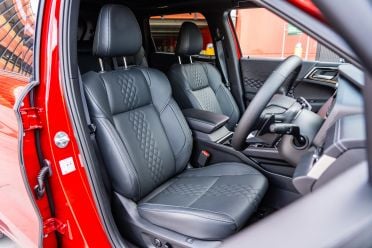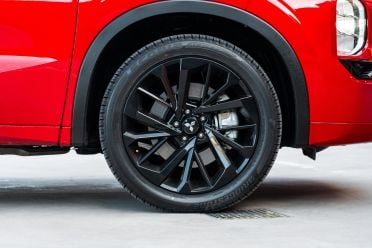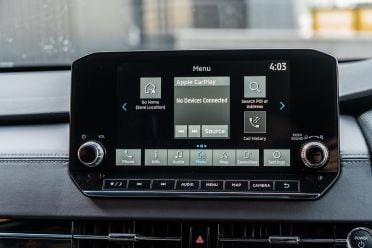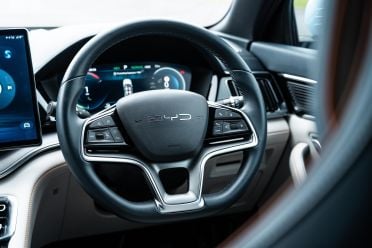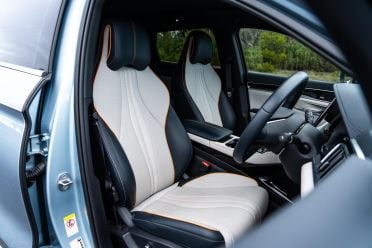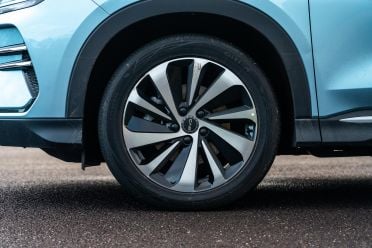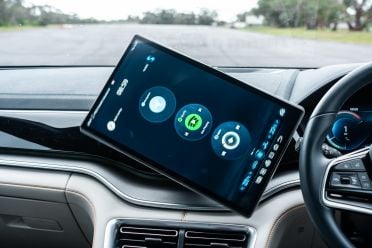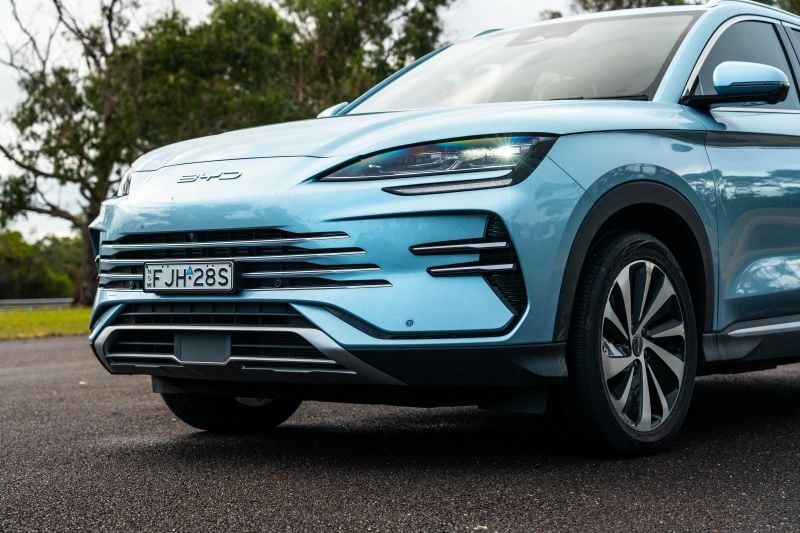The Mitsubishi Outlander Plug-in Hybrid EV (PHEV) may be the long-standing plug-in hybrid SUV favourite in Australia, but BYD’s new kid on the block is looking to take its crown.
There isn’t a lot to separate the Outlander PHEV and the BYD Sealion 6 on paper, which means it likely comes down to price on what people would prefer to have in their garage.
The Sealion 6 does work out to be cheaper, but BYD isn’t as established a name in Australia as Mitsubishi is. Nevertheless, the Chinese brand continues to grow its local sales every year.
It’s now the world’s largest electric vehicle (EV) manufacturer after having overtaken Tesla in recent years, and it’s the largest carmaker in China after Volkswagen was dethroned for the first time since 1986.
Considering a new PHEV SUV for your next car? Here’s how each option stacks up on paper.
Note: Mitsubishi Outlander PHEV GSR pictured throughout.
Interested in buying a Mitsubishi Outlander PHEV or BYD Sealion 6? Get in touch with a dealer by clicking the links.
MORE: Everything Mitsubishi Outlander • BYD Sealion 6
Pricing
There are multiple variants of each model, though the Mitsubishi Outlander PHEV is more expensive across the range.
Mitsubishi offers four variants of the Outlander PHEV: ES, Aspire, Exceed, Exceed Tourer, and GSR.
BYD’s Sealion 6 model range is instead sold in two variants: Dynamic and Premium AWD. The main differences are that all Outlander PHEVs offer all-wheel drive as standard and higher grades offer three rows of seating; while the Sealion 6 offers a choice between front- and all-wheel drive but is five-seat only.
For comparison, the non-PHEV Outlander lineup ranges in price from $37,740 before on-roads and $55,190 before on-roads.
| Model | Price range before on-roads |
|---|---|
| Mitsubishi Outlander PHEV | $57,290-$73,790 |
| BYD Sealion 6 | $48,990-$52,990 |
Interested in buying a Mitsubishi Outlander PHEV or a BYD Sealion 6? Get in touch with a dealer by clicking the links.
MORE: Everything Mitsubishi Outlander • BYD Sealion 6
Drivetrains and Efficiency
Given both these cars offer PHEV drivetrains, this is where the biggest comparison lies.
In the case of the Mitsubishi, all Outlander PHEV variants use the same drivetrain configuration. The BYD, meanwhile, differs between front- and all-wheel drive configurations.
The BYD is also claimed to be more efficient than the Outlander while producing more power in all-wheel drive guise. According to NEDC figures – used here for consistency – the Outlander can travel further in EV mode than the equivalent Sealion 6.
It has a larger battery, and it’s marginally heavier in top-spec configuration too. A downside is carbon dioxide emissions are claimed to be slightly worse than the BYD.
| Specifications | BYD Sealion 6 Dynamic | BYD Sealion 6 Premium | Mitsubishi Outlander PHEV |
|---|---|---|---|
| Engine | 1.5L 4cyl PHEV Single motor | 1.5L 4cyl turbo PHEV Dual motors | 2.4L 4cyl PHEV Dual motors |
| Maximum power | 160kW | 238kW | 185kW |
| Maximum torque | 300Nm | 550Nm | 450Nm |
| Transmission | Reduction gear, single speed | Reduction gear, single speed | Single-speed |
| Driven wheels | Front-wheel drive | All-wheel drive | All-wheel drive |
| Kerb weight | 1940kg | 2100kg | 2020kg-2145kg |
| Gross Vehicle Mass (GVM) | 2350kg | 2510kg | 2650kg-2750kg |
| Fuel economy (claim) | 1.1L/100km | 1.4L/100km | 1.5L/100km |
| CO2 emissions | 24g/km | 32g/km | 35g/km |
| EV battery | 18.3kWh Blade (LFP) | 18.3kWh Blade (LFP) | 20.0kWh Li-ion |
| EV driving range (NEDC) | 92km | 81km | 84km |
| Fuel tank size | 60L | 60L | 56L |
| Fuel requirement | 95 RON | 95 RON | 91 RON |
Interested in buying a Mitsubishi Outlander PHEV or a BYD Sealion 6? Get in touch with a dealer by clicking the links.
MORE: Everything Mitsubishi Outlander • BYD Sealion 6
Dimensions
The Mitsubishi Outlander is larger than the Sealion 6, but there isn’t a huge difference.
As the Sealion 6 is only a five-seater, it’s best compared against the five-seat Outlander PHEV. Boot capacity differs greatly, with the Mitsubishi offering much more space in both seats-up and seats-folded configurations.
The seven-seat version is bigger still, and you still get nearly the same capacity with all seats in place as you do in the five-seat Sealion 6.
| Dimensions | BYD Sealion 6 | Mitsubishi Outlander PHEV |
|---|---|---|
| Length | 4775mm | 4710mm |
| Width | 1890mm | 1862mm |
| Height | 1670mm | 1740mm |
| Wheelbase | 2765mm | 2706mm |
| Boot capacity | 228L/858L | 363L/1177L (5-seat) 191L/461L/1387L (7-seat) |
Interested in buying a Mitsubishi Outlander PHEV or a BYD Sealion 6? Get in touch with a dealer by clicking the links.
MORE: Everything Mitsubishi Outlander • BYD Sealion 6
Servicing and Warranty
The Mitsubishi Outlander is covered by a standard five-year, 100,000km warranty, along with an eight-year, 160,000km battery warranty – the former is extendable to 10 years/200,000km if you service within the brand’s network.
Logbook servicing is required every 12 months or 15,000km, whichever comes first. Mitsubishi also offers up to 10 years of capped-price servicing, with average annual pricing at $549 for a total of $5490.
EVDirect, BYD’s Australian distributor, covers the BYD range with a six-year, 150,000km vehicle warranty and an eight-year, 160,000km battery warranty.
BYD outlines service intervals of 12 months or 20,000km for the Sealion 6. Service pricing is outlined for the first 11 services, with an average annual cost of $413.55 and a total of $4549.
That means the BYD works out to be cheaper to service each year on average.
Interested in buying a Mitsubishi Outlander PHEV or a BYD Sealion 6? Get in touch with a dealer by clicking the links.
MORE: Everything Mitsubishi Outlander • BYD Sealion 6
Safety
Both cars wear a five-star ANCAP safety rating, scoring above 80 per cent each for adult occupant protection, child occupant protection, vulnerable road user protection, and safety assist.
The only discrepancy in those scores regards safety assist, in which the Sealion 6 scored 75 per cent.
The Outlander and the Sealion 6 have eight and seven airbags respectively, but both benefit from tech like adaptive cruise control, autonomous emergency braking, blind-spot monitoring, and traffic sign recognition.
Both also have lane-keep assist and rear cross-traffic alert, though the BYD gains front cross-traffic assist and high-beam assist.
The Outlander’s Exceed and Exceed Tourer variants gain Mitsubishi’s MI-PILOT assistant. This adds Traffic Jam Assist (adaptive cruise control that re-engages after a complete stop), lane-keep assist (using steering control assistance rather than wheel braking), and speed limit assist (adaptive cruise control that matches the Outlander to the indicated speed limit).
Interested in buying a Mitsubishi Outlander PHEV or a BYD Sealion 6? Get in touch with a dealer by clicking the links.
MORE: Everything Mitsubishi Outlander • BYD Sealion 6
Standard Equipment
There are some differences in standard features between the two cars, though it’s largely dependent on variant.
At the bottom of the range the Outlander PHEV rides on 18-inch wheels compared to the BYD’s 19-inch, though both have a 12.3-inch digital instrument cluster and wireless smartphone mirroring – though it’s only wireless Apple CarPlay in the Outlander.
The BYD has synthetic leather upholstery compared to Mitsubishi’s cloth, and you can only get leather in the Outlander by moving up to the Exceed variant. Powered seat adjustment is available from the Outlander Aspire, while all Sealion 6 variants have it as standard.
You also have to move towards the top of the Outlander PHEV to get the largest infotainment screen available (9.0-inch), all Sealion 6 variants come standard with a 15.6-inch rotating touchscreen display.
Both have DAB+ digital radio, satellite navigation, a wireless phone charge, dual-zone climate control, and keyless entry and start.
View a full breakdown of standard features for the Outlander PHEV here, while you can read about the Sealion 6 here.
Interested in buying a Mitsubishi Outlander PHEV or a BYD Sealion 6? Get in touch with a dealer by clicking the links.
MORE: Everything Mitsubishi Outlander • BYD Sealion 6
CarExpert’s Pick
James Wong: For Australian families looking to electrify their daily commute but perhaps cautious of going full EV, the two options here offer excellent electric driving range and family-friendly practicality.
Both offer relatively refined and comfortable drives, though the BYD’s ride can be a touch too soft over larger undulations and the Outlander’s big alloy wheels can jar over sharper imperfections on city roads.
The Outlander Plug-in Hybrid EV’s available seven seats puts it in a league of its own given the larger Kia Sorento PHEV is priced well into the $80,000 bracket, and it offers a range of variants and price points to cater to different budgets.
Mitsubishi’s plug-in SUV also offers a strong conditional warranty of up to 10 years, and can run on cheaper 91 RON regular unleaded on the odd occasion you have to visit the fuel station.
However, BYD’s Sealion 6 is a knockout when you do the value for money equation. Undercutting its Japanese rival by almost $10,000 in base form, it offers more EV range in its 2WD specification and more equipment as standard.
Unless you absolutely need the extra row of seating (which raises the base pricing to $69,290), I think the BYD Sealion 6 is the better bet for those wanting to make the move to a plug-in vehicle with the back up of an combustion engine.
Interested in buying a Mitsubishi Outlander PHEV or a BYD Sealion 6? Get in touch with a dealer by clicking the links.





